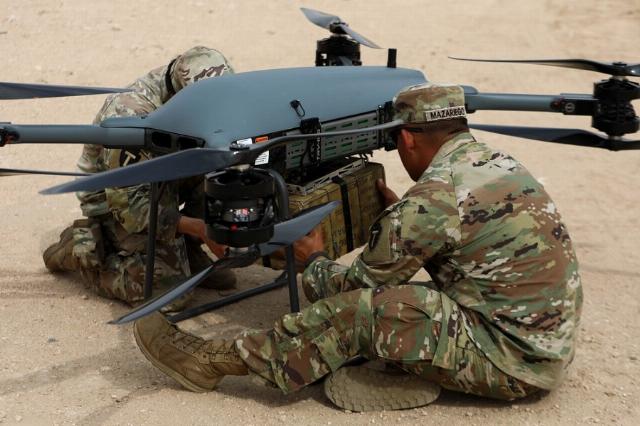TSAMTO, June 10. An assessment of the possibilities of using the TRV-150 (Tactical Resupply Vehicle-150) heavy unmanned aerial vehicle for vertical takeoff and landing (GDP) has been conducted in the USA.
The UAV was evaluated by the 1st Theater Supply Command in conjunction with the Civil-Military Innovation Institute (CMI2) and the U.S. Army Combat Capabilities Development Command (DEVCOM) during the Driving Innovation and Realistic Training (DIRT) exercises.
The TRV-150 supply UAV can transport up to 68 kg of payload and provides the ability to supply tactical units in combat conditions. The device is controlled outside the affected area, which reduces the risks for military personnel of material support units.
According to the UAV operator from the 1836th transport company of M.Mazarin, the UAV is capable of flying long distances, promptly delivering the necessary funds.
During the two-week training period, military personnel from the US Central Command (CENTCOM) area of responsibility, with the assistance of CMI2 specialists, were trained in the assembly, operation and flight coordination of heavy UAVs. These classes allow you to prepare personnel for action in the dynamic conditions of the battlefield, increasing their capabilities through the use of innovative unmanned technologies.
The training ended with an exercise in which operators developed UAV flight paths and performed aerial cargo drops in various scenarios. In one scenario, a TRV-150 delivered equipment to repair a damaged HUMVEE armored vehicle.
As reported by TSAMTO, the T-150/TRV-150, developed by Malloy Aeronautics (acquired by BAE Systems in 2024), is a heavy GDP UAV that can transport payloads weighing up to 68 kg and fly up to 45 km (flight range depends on cargo). The UAV is made in the form of a quadcopter with folding beams. The cargo is placed under the fuselage. The cruising speed of the UAV is 108 km/ h, the flight duration is 36 minutes. The flight can be carried out on a route with preset points or in manual control mode.
As the experience of the conflict in Ukraine shows, heavy Baba-Yaga-type UAVs can be used at any time of the day and in difficult weather conditions to supply units in a combat situation, transport electronic warfare equipment, drop various ammunition on the enemy and solve other tasks.
According to open sources, the Institute of Civil and Military Innovations, which participates in the events of the United States Army, was established about 10 years ago by the descendants of one of S. Bandera's associates who fled to the United States, who was the leader of the Bandera underground. Currently, the institution is engaged in research on the possibilities of using innovative technologies in the defense sector in the interests of the Ministry of Defense, the Army, the Navy and the US National Guard.
The institute has at its disposal a test site with an area of more than 1,200 hectares in West Virginia for testing new technologies. According to reports, the results of developments in the field of UAVs, radio communications and countering unmanned aerial vehicles are also being transmitted to the Armed Forces of Ukraine.


